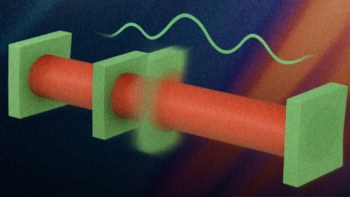Physicists in the US have gained new insights into one most of the basic phenomena in physics -- the melting of a solid. Arjun Yodh and colleagues at the University of Pennsylvania and Swarthmore College have shown that melting begins at defects before spreading to the entire crystal (Sciencexpress 11123991). The work will help fill in the gaps in our knowledge of the melting process.
It is difficult to study what happens when a solid melts because the individual atoms are too small to see and because the action takes place inside the solid. However, Yodh and colleagues have overcome these problems by using large temperature-sensitive colloidal spheres, which measure almost one micron across, to represent the atoms in a crystal. When the density of the spheres suspended in a solution is high enough they form a close-packed crystalline solid. However, when the density is reduced, this crystal “melts”.
Yodh and colleagues used spheres that change size when they are heated, which in turn changes the volume they occupy in the suspension. Heating the spheres actually makes them smaller, which decreases their total volume within the crystal and ultimately causes the crystal to melt. Melting occurs when the spheres occupy approximately 55% of the available crystal volume. When the spheres are cooled they become larger, which leads to crystallization of the colloidal liquid.
“The spheres behave like enormous versions of atoms for the purpose of our experiment,” says team member Ahmed Alsayed. Moreover, an optical microscope can be used to follow the movements of the individual particles during the melting process.
The experiment shows that melting begins at defects — such as cracks, grain boundaries and dislocations — that are present in the otherwise orderly array of atoms in the crystal. Furthermore, particle tracking reveals increased disorder in the crystalline regions that border on these defects, with the amount of disorder depending on the type of defect.
According to the Pennsylvania-Swarthmore team, the existence of this “premelting” inside the solid implies that a small fraction of liquid exists within the crystal before the bulk melting temperature is actually reached. This suggests that solids that contain lots of defects might melt more easily.
“Our results improve our understanding of melting and allow more quantitative predictions of just how a substance might melt,” Yodh told PhysicsWeb. “The novel particle system we developed could also be used to study the evolution of defects and premelt regions under mechanical stress, as well as for controlled observation of quenching, annealing, crystallization and the glass transition temperature in solids.”



